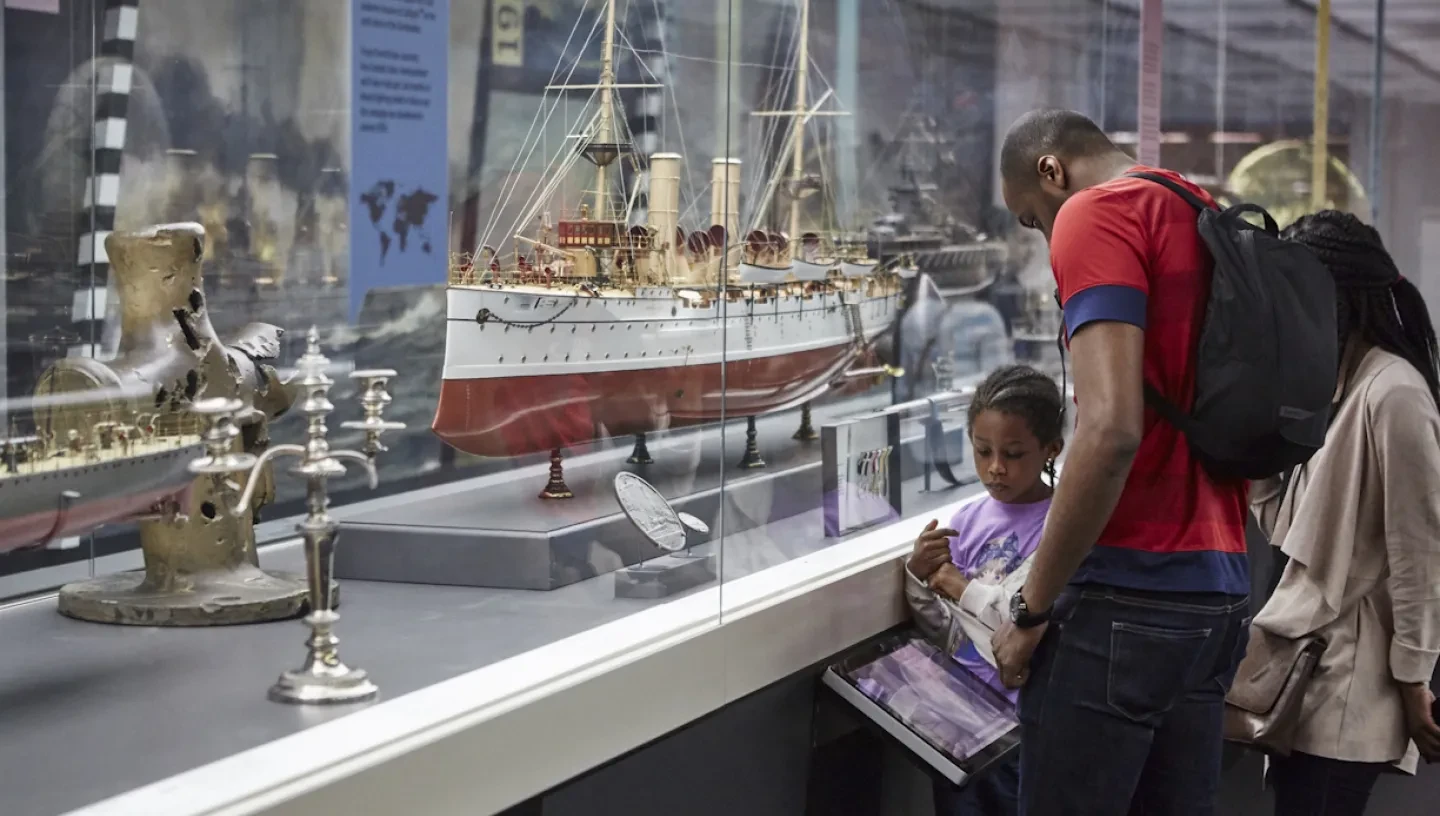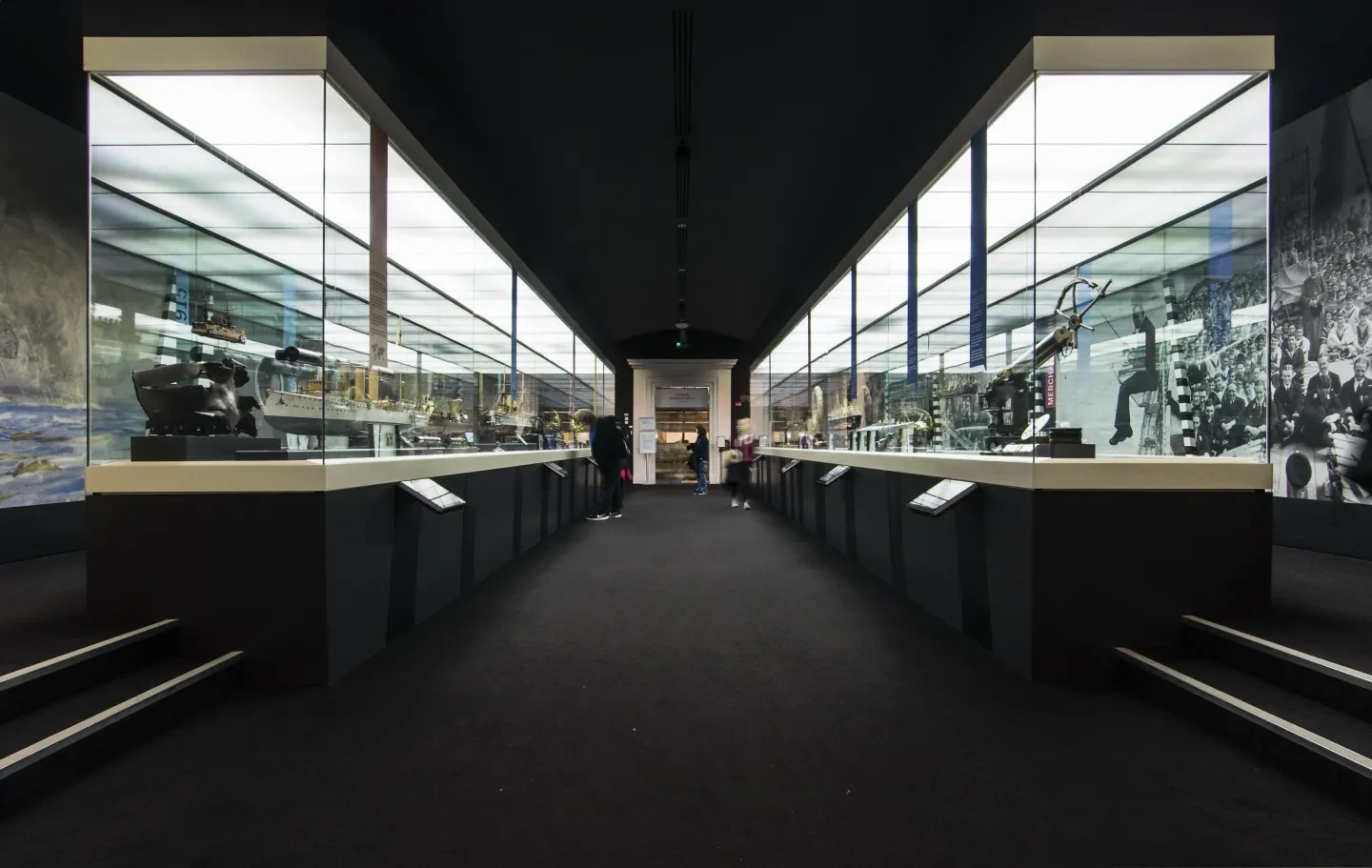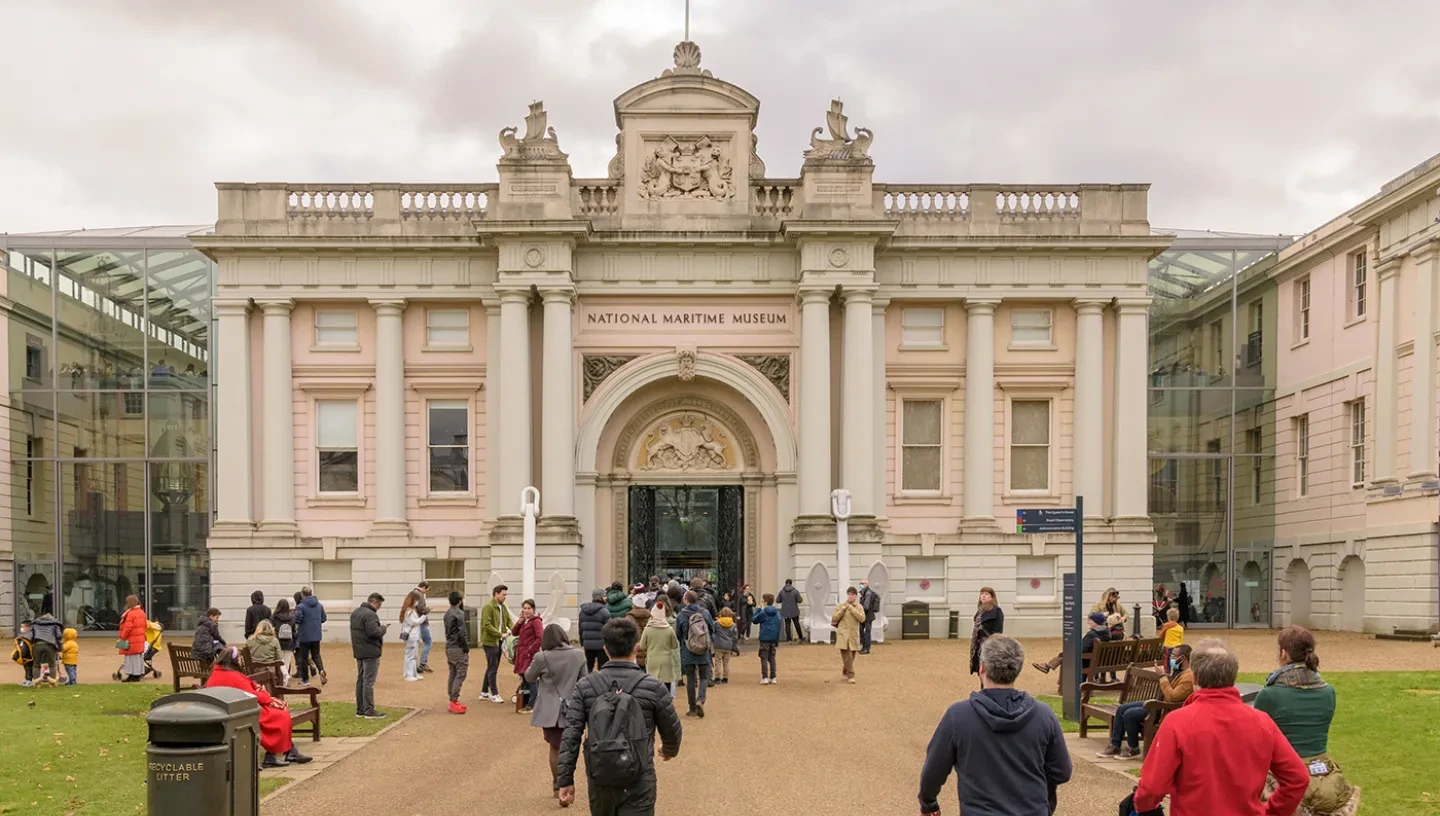
Essential information
| Location | |
|---|---|
| Price | Free |
Please note that Forgotten Fighters is currently undergoing essential improvement works.
The sea is an often-forgotten battleground of the First World War. Yet, without the crucial roles played by the Royal Navy and merchant service, an Allied victory would not have been achieved.
The Forgotten Fighters gallery at the National Maritime Museum explores Britain’s naval experiences during the First World War through artefacts, model vessels, weapons and documents, and tells some of the remarkable true stories of the crews who fought under extreme conditions.
Visit Forgotten Fighters, and explore how the First World War played out in one of the most unpredictable and unforgiving environments on Earth.
Inside the gallery
Britain’s war at sea took many different forms and was fought worldwide; from blockading the German fleet in the North Sea, to attacking strategic sea passages in the Middle East, and protecting underwater communications infrastructure across the globe.

Back on dry land, thousands were employed in important roles such as designing, building and equipping ships. Later in the conflict, the new Women’s Royal Naval Service provided essential support to those fighting at sea, with women filling roles that were previously exclusive to men.
In the gallery, through the biographies of sailors, merchant seafarers, reservists, pilots, submariners and more, you’ll discover the often-untold stories of people placed in extraordinary circumstances above and beneath the waves.
Visiting Forgotten Fighters
Where is the gallery?
Forgotten Fighters is a permanent gallery at the National Maritime Museum in Greenwich, located on the second floor. Entry to the Museum is free: book tickets online in advance to guarantee entry and receive updates before you visit.
Tours and audio guides
Forgotten Fighters features as part of the range of audio guides available at the National Maritime Museum. Listen to a free introduction to the gallery here, or find out more about objects on display by ordering a special Treasures Tour.
Accessibility
BSL is included as part of the National Maritime Museum audio guide. Large print guides are also available inside the gallery. For more information about accessibility at the National Maritime Museum, click here.
Gallery closures
Occasionally some gallery closures may affect your visit to the National Maritime Museum. Find details of upcoming closures here.
Make the most of your visit
Find more free galleries and attractions at the National Maritime Museum.
Tickets and Opening
Free entry
10am-5pm daily
- Greenwich Station
- Maze Hill Station
- Greenwich Pier








